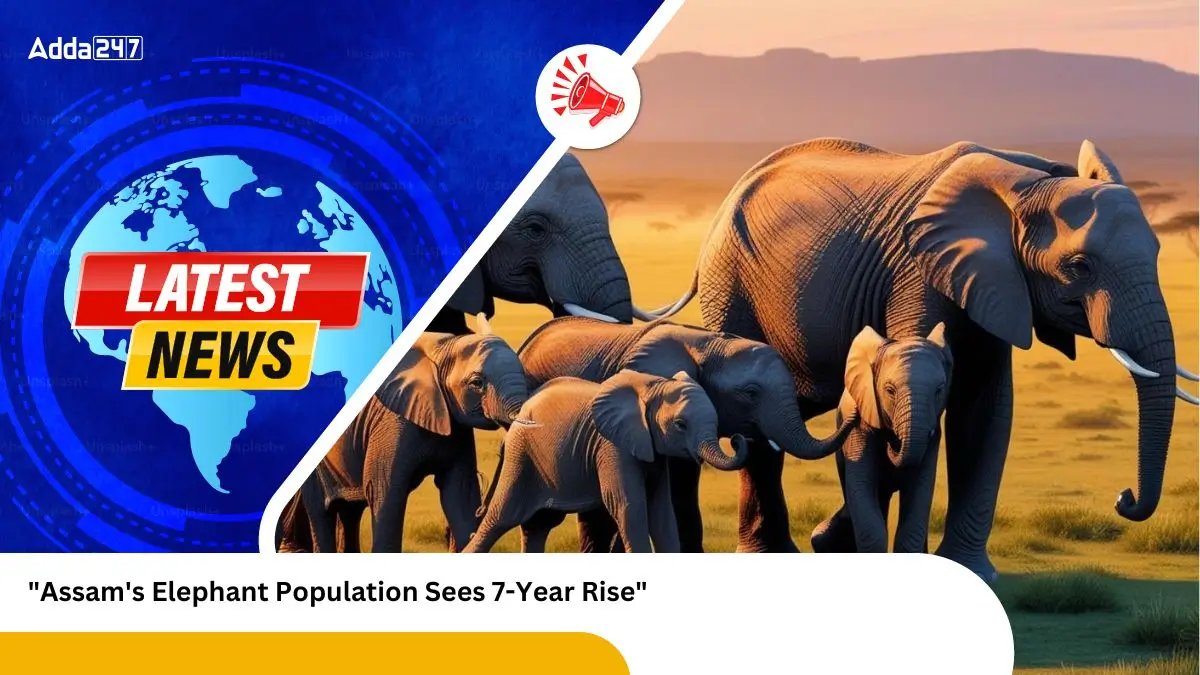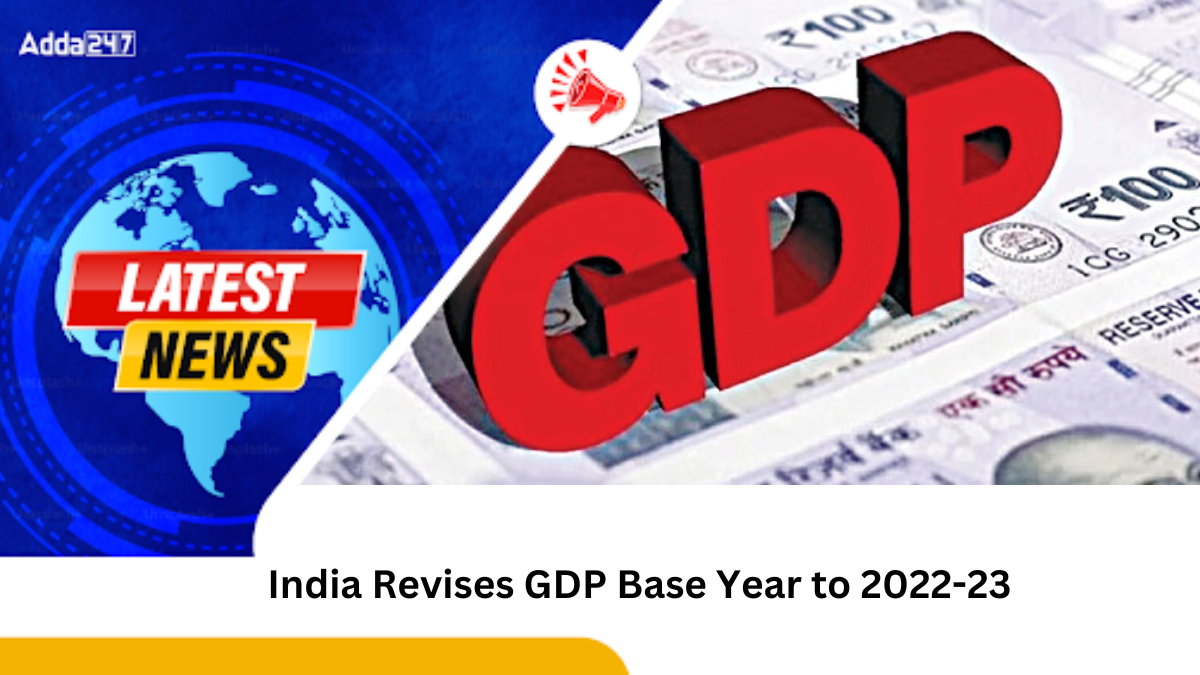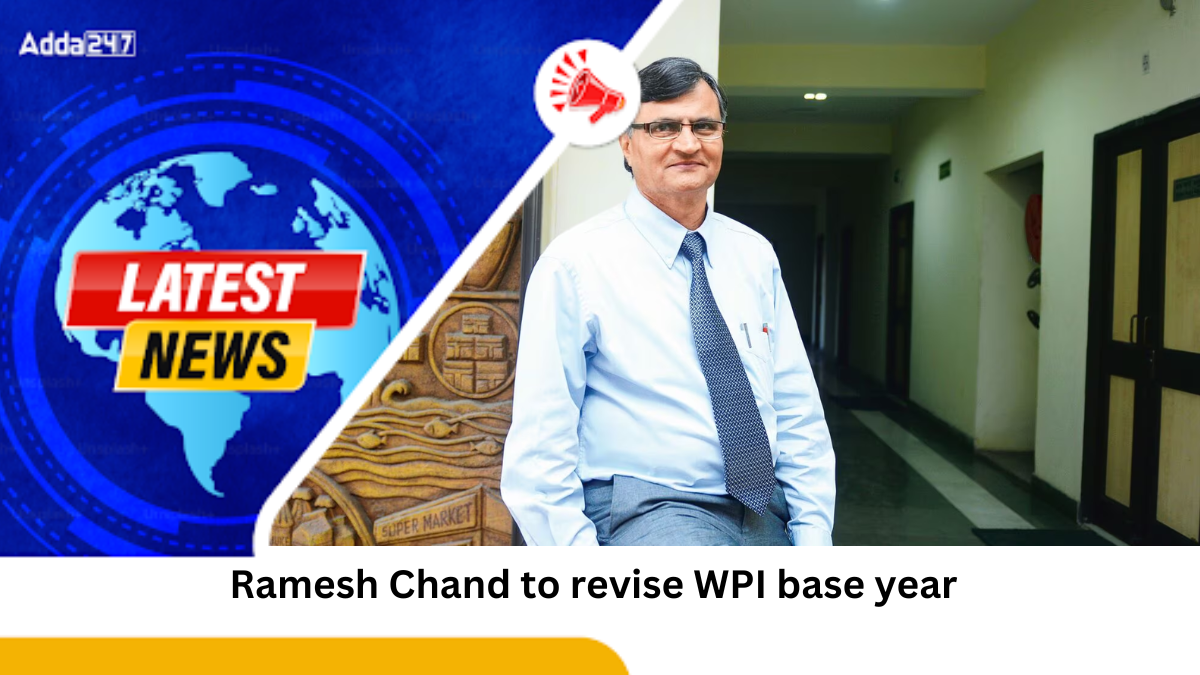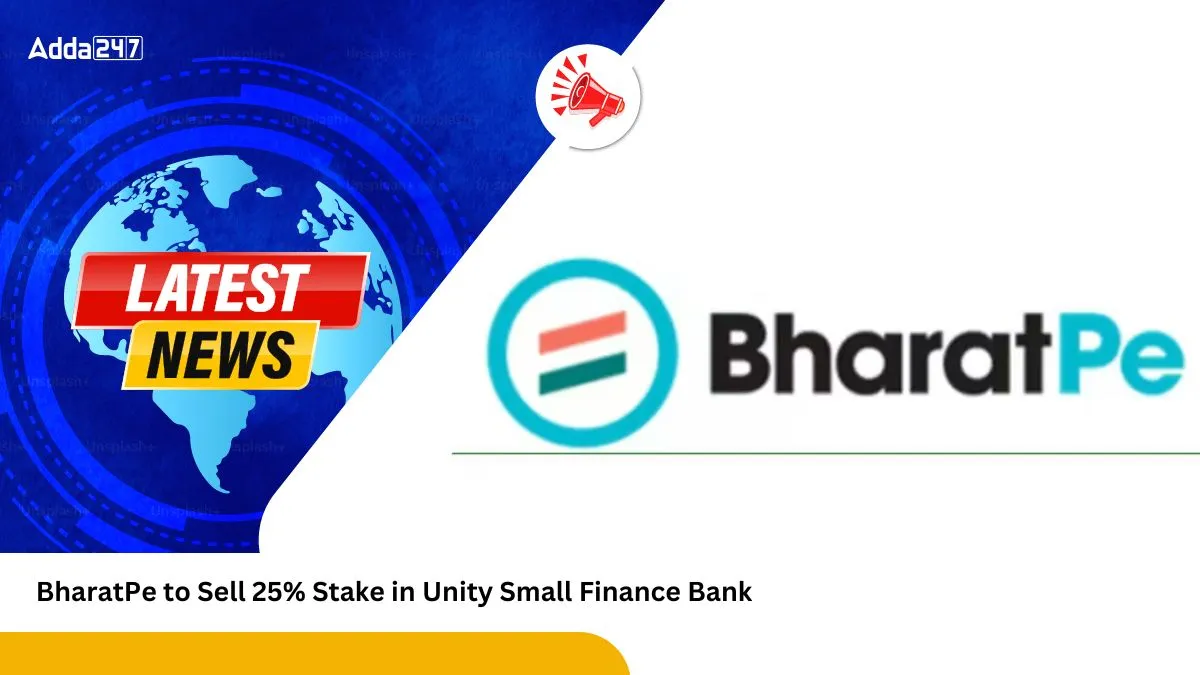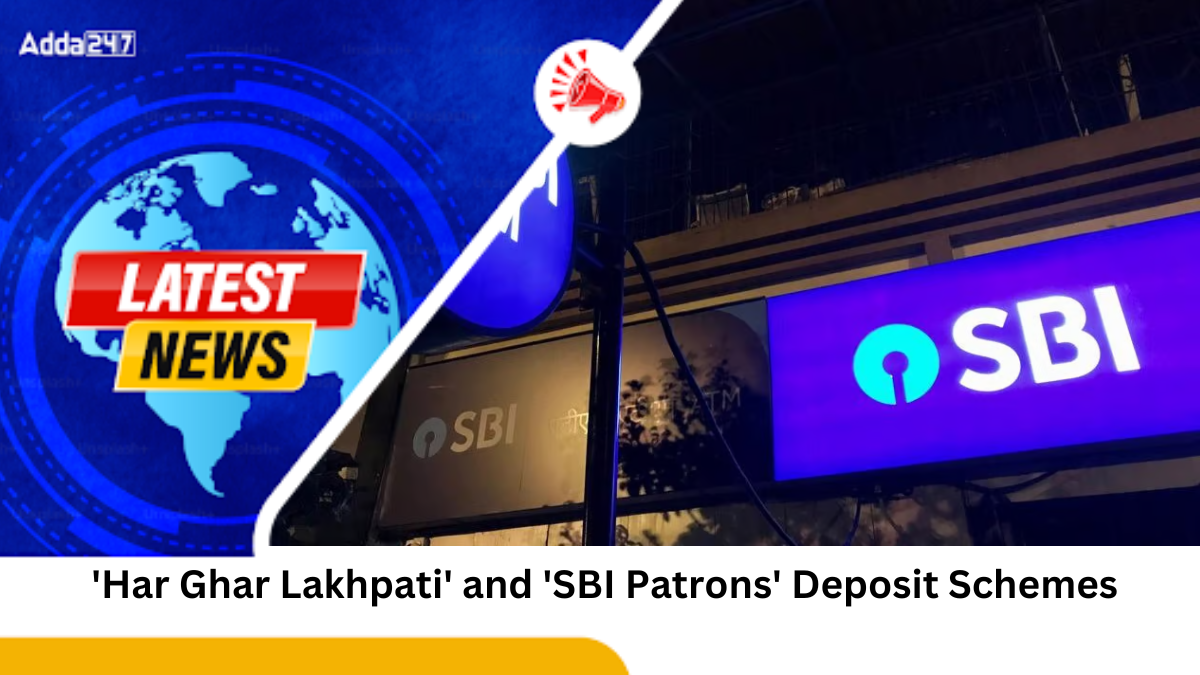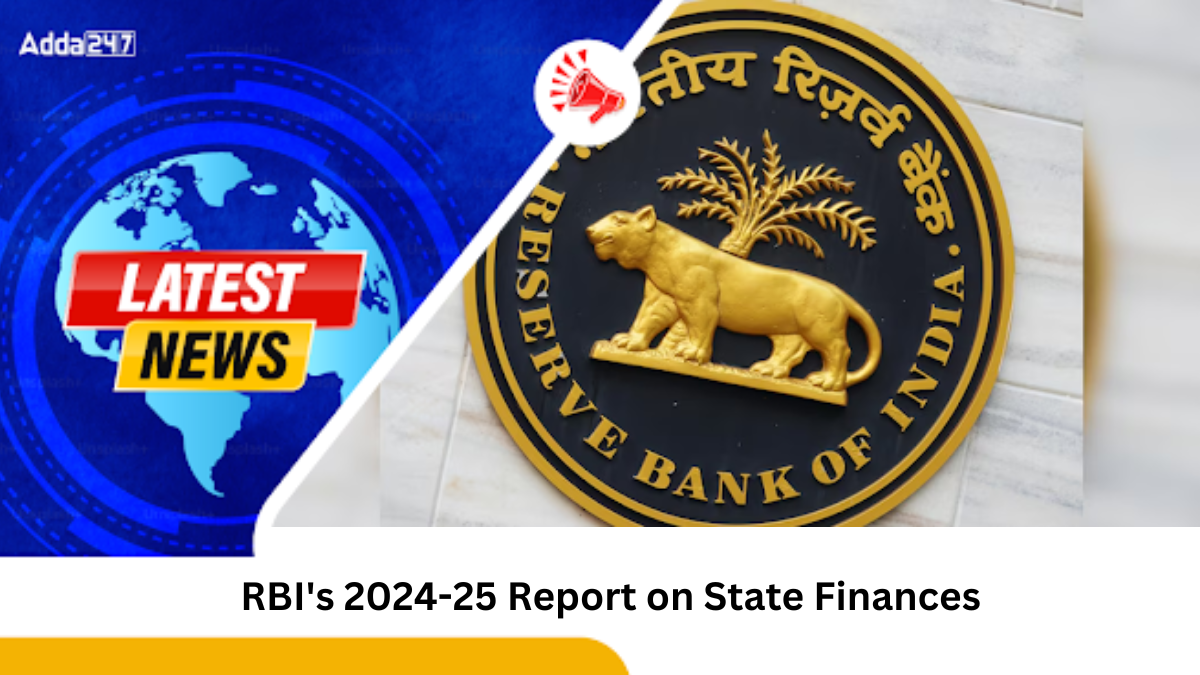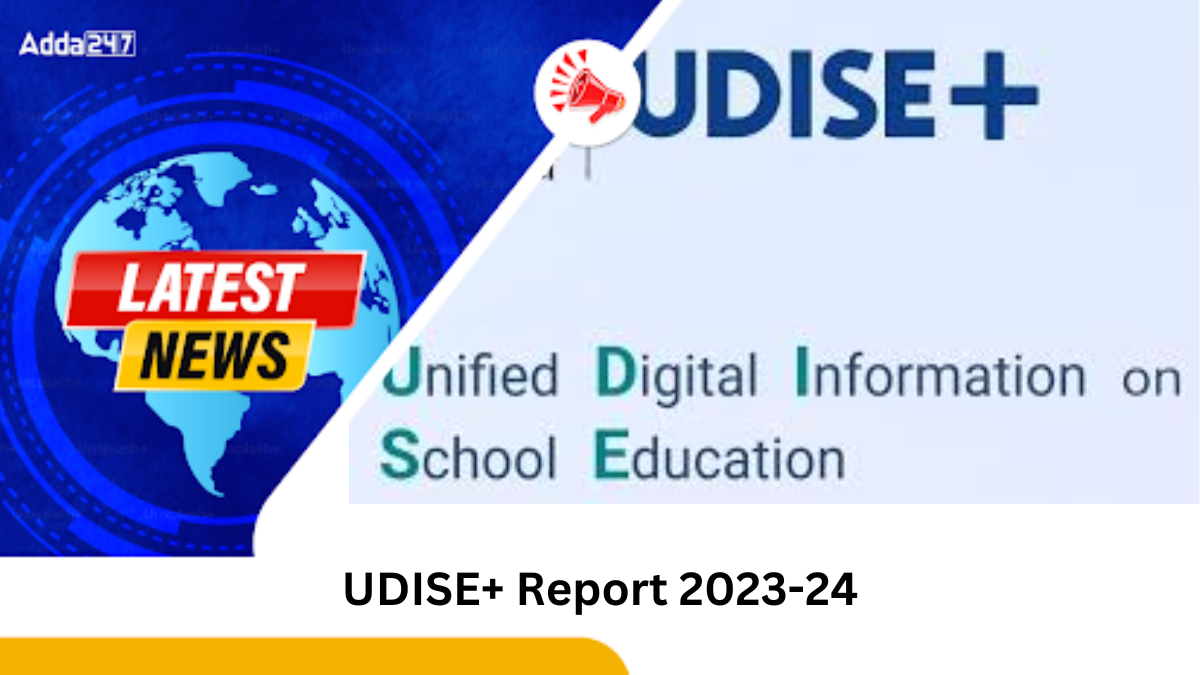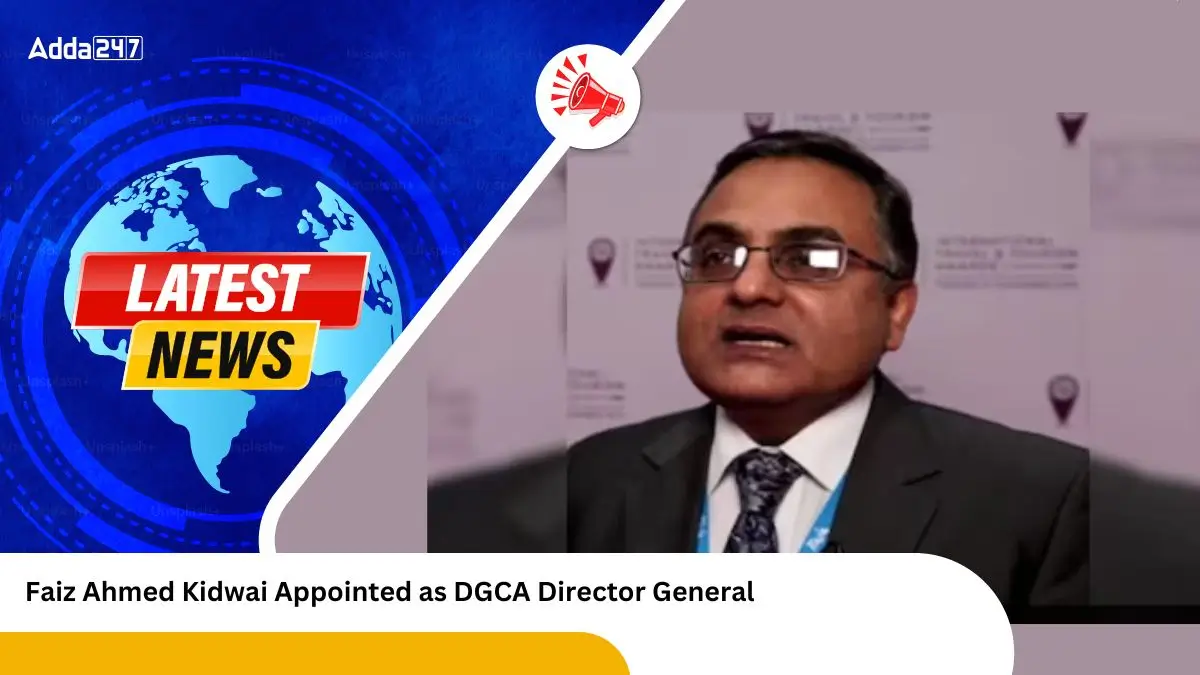The JAIIB Syllabus 2025 and Exam Pattern have been provided, a complete detailed framework for candidates to clear the exam. The syllabus is designed to enhance the knowledge and skills of banking professionals in key areas such as accounting, legal aspects and financial principles. The updated pattern reflects the evolving demands of the banking and financial sector, making it crucial for the aspirants to stay informed. Candidates are advised to download the detailed syllabus pdf to gain a clear understanding of the topics covered and strategize their preparation effectively. With the right approach, clearing the JAIIB exam can open a new form of career advancement in the banking industry.
JAIIB Syllabus and Exam Pattern 2025
Candidates who aim to excel in the JAIIB flagship course must stay updated on the JAIIB syllabus and exam pattern. After becoming familiar with the syllabus, aspirants can plan an effective study strategy. The IIBF JAIIB 2025 Exam follows a structured syllabus and exam pattern, essential for banking professionals aiming to excel in the field.
Candidates must clear each of the four compulsory papers to obtain the JAIIB Certificate. The exam format typically includes multiple-choice questions (MCQs), with a passing requirement of 50 marks out of 100 per paper. Aspirants must thoroughly understand the JAIIB Syllabus and devise a strategic study plan for effective preparation.
JAIIB Exam Pattern 2025
JAIIB Exam has Four papers: Indian Economy and Indian Financial System (IE & IFS); Principles and Practices of Banking(PPB); Accounting and Financial Management for Bankers (AFM); and Retail Banking and Wealth Management (RBWM). Each of the papers of JAIIB is further divided into different modules. JAIIB Exam 2025 will be an online medium and each of the 4 papers will comprise 100 Questions for 100 marks. The time allotted to complete each paper of JAIIB is 2 Hours. The overall summarized JAIIB Exam Pattern 2025 has been mentioned in the table below.
JAIIB Exam Pattern 2025
|
| Papers |
No. of Questions |
Total Marks |
Duration |
| Indian Economy and Indian Financial System |
100 |
100 |
2 Hours |
| Principles and Practices of Banking |
100 |
100 |
2 Hours |
| Accounting and Financial Management for Bankers |
100 |
100 |
2 Hours |
| Retail Banking and Wealth Management |
100 |
100 |
2 Hours |
IIBF JAIIB Syllabus 2025 Download PDF
Aspirants preparing for the JAIIB Exam should be familiar with the JAIIB Syllabus 2025. Here, we have provided the direct link to download the PDF for the IIBF JAIIB Syllabus. Preparing along with the syllabus ensures that not a single topic is left uncovered.
JAIIB Syllabus 2025-Click Here To Download PDF

JAIIB Syllabus 2025
As per the changes made by IIBF, JAIIB Syllabus 2025 comprises 4 compulsory subjects. Aspirants should have a thorough and deep knowledge of JAIIB Syllabus so that not a single topic is left behind.
Paper 1: Indian Economy and Indian Financial System (IE & IFS)
Paper 2: Principles and Practices of Banking (PPB)
Paper 3: Accounting and Financial Management for Bankers (AFM)
Paper 4: Retail Banking and Wealth Management (RBWM)
JAIIB Paper 1: Indian Economy and Indian Financial System (IE & IFS)
The first paper of JAIIB Syllabus 2025 is the Indian Economy and Indian Financial System. There are four modules in the JAIIB Paper 1 Syllabus: Indian Economic Architecture, Economic Concepts Related to Banking, Indian Financial Architecture, and Financial Products and Services. Here, we have provided the topics of each module.
Module A: Indian Economic Architecture
An overview of Indian Economy: Evolution of Indian Economy, Basic Characteristics of Indian Economy, Indian Economy in Pre-British period, Economy till 2008 & after 2008, Structural changes in Indian Economy.
Economic Planning in India: Definition of Economic Planning, History of Economic Planning, Objectives of Economic Planning, Types of Planning, Achievements of Planning, Financial resources for 5-year plans.
Sectors of the Indian Economy: Role & Importance of Primary, Secondary, Tertiary Sector, Quaternary & Quinary Sectors, Different Revolutions in Primary sector, Difference between the sectors, GDP contribution of different sectors, Agriculture, Industry, Services, Employment growth rate in Secondary sector, Sunrise Sector of Indian Economy, Organized and Unorganized sectors.
Role of Priority Sector and MSME in the Indian Economy: Definition & Role of Priority Sector, List of Priority Sectors identified in India, Priority Sector Lending Norms, Definition of MSME, Role & Significance of MSME in economic development, Contribution of MSME in GDP, Recent Initiatives in MSME sector viz., Atmanirbhar Bharat package, Make in India, Start-up India, Stand-up India etc.
Infrastructure including Social Infrastructure: Infrastructure & Economic Development, Energy, Power, Transport system viz., Rail, Road, Civil Aviation, Concept of Social Sector & Social Infrastructure, Health, Education, Family Welfare, Development of Health Infrastructure.
Globalisation – Impact on India: Globalisation and its Advocacy, Globalisation and its Impact on India, Fair Globalisation & the
Need for Policy Framework, Globalisation in reverse gear – The Threatened Re-emergence of Protectionism.
Economic Reforms: A Brief Overview, Transformation, Economic Transformation – Real Sector, Economic Transformation – Financial Sector, Economic Transformation – Integration with the Global Economy, Economic Reforms in India.
Foreign Trade Policy, Foreign Investments and Economic Development: FTP – Structural Changes during 1990s, FTP policy – 2015-2020, Challenges to be addressed in upcoming FTP, FDIs, FIIs and Recent trends, Economic development vs economic growth,
Importance of economic development as a dimension etc.
International Economic Organizations (World Bank, IMF etc.): IMF and World Bank, WTO- India and WTO, Regional Economic Co-operations, Recent International Economic Issues.
Climate change, Sustainable Development Goals (SDGs): Core elements of Sustainable Development, Global Issues and initiatives, India’s progress in SDGs including Climate change, CSR Activities.
Issues facing Indian Economy: Poverty Alleviation, Jobless growth, Rising Inequalities, Migration and excessive pressure on resources, Possible remedies, Pandemic situations
Module B: Economic Concepts Related to Banking
Fundamentals of Economics, Microeconomics, Macroeconomics and Types of Economies: Economics – An Introduction, Microeconomics and Macroeconomics, Types of Economies, Market, Command, and Mixed Economies.
Supply and Demand: The Demand Schedule, Forces behind the Demand Curve, shifts in Demand, The Supply Schedule, Forces behind the Supply Curve, shifts in Supply, Equilibrium of Supply and Demand, Effect of a Shift in Supply or Demand, Interpreting Changes in Price and Quantity.
Money Supply and Inflation: What is Money, Money Supply, Inflation, Causes of Inflation, Measures of Inflation.
Theories of Interest: Classical Theory of Rate of Interest, Keynes’ Liquidity Preference Theory of Rate of Interest, Money Demand Curve, Determination of Rate of Interest: Equilibrium in the Money Market, Effect of an Increase in the Money Supply, shifts in Money Demand or Liquidity Preference Curve, Hicks-Hansen Synthesis: IS-LM Curve Model.
Business Cycles: Characteristics of a Business Cycle, Phases of a Business Cycle.
Monetary Policy and Fiscal Policy: Tools of Monetary Policy, How Did Monetary Policy in India Respond to the Global Financial
Crisis? Fiscal Policy, FRBM Act.
National Income and GDP Concepts: Computation, Utility.
Union Budget: Receipts, Expenditure, Plan Expenditure, Deficit Concepts.
Module C: Indian Financial Architecture
Indian Financial System – An Overview: What is a Financial System? Phase I: Pre-1951 organisation, Phase II: 1951 to Mid-eighties
organisation, Phase III: Post Nineties Organisation, Narasimham Committee (1991) on the banking system in India, Reform of the Banking sector (1992-2008), Present Status of Banking System.
Indian Banking Structure: Functions, Development of Banking in India, Scheduled Commercial Banks- Types and functions, Local Area Banks, Regional Rural Banks, Cooperative Banks: Types, Payment Banks and Small Finance Banks, NBFCs, Key RBI Guidelines.
Banking Regulation Act, 1949 and RBI Act, 1934: Background of Enactment, PART-I Reserve Bank of India Act, 1934: Chapter I to Chapter V, Schedules to the RBI Act, 1934, PART-II Banking Regulations Act, 1949, Background and Structure of the Banking Regulation Act: Section 1 to Section 56.
Development Financial Institutions: Evolution of Development Financial Institutions in India, Gaps in the Post-Independence Financial System, Objectives of Development Financial Institutions, Classification of DFIs, Role of DFIs in the Indian Economy, Changing Role of DFIs and Emergence of Universal Banks, Industrial Finance Corporation of India (IFCI), Industrial Credit and Investment Corporation of India (ICICI), Industrial Development Bank of India (IDBI), Small Industries Development Bank of India (SIDBI), Export Import Bank of India (EXIM Bank), National Bank for Agriculture and Rural Development (NABARD), National Housing Bank (NHB), National Bank for Financing Infrastructure and Development (NaBFID).
Micro Finance Institutions: Evolution of Microfinance in India, Grameen Bank Model, Delivery of Microfinance, SHG-Bank Linkage Programme, Joint Liability Groups (JLGs), Regulatory Framework for Microfinance Institutions, Inclusion of Bank Finance to Microfinance Institutions in Priority Sector Lending, Regulatory Framework for Micro Finance Loans RBI Directions 2022, RBI’s Fair Practices Code for NBFC-MFIs.
Non-Banking Financial Companies: What is a Non-Banking Financial Company (NBFC)?, Evolution of NBFCs in India, Role of NBFC in Promoting Inclusive Growth of India, Regulators of NBFCs, Classification of NBFCs, Regulatory Oversight by RBI on NBFCs, Types of NBFCs, Concept of Owned Funds and Net Owned Funds (NOF) for NBFCs, Bank Finance to NBFCs, Fair Practice Code for NBFCs, Applicability of Ombudsman Scheme to NBFCs, Scale Based Regulation (SBR): A Revised Regulatory Framework for NBFCs.
Insurance Companies: History and Development of Insurance. Privatisation and Foreign Direct Investment (FDI) in the Insurance Sector. Insurance Business Globally and in India. Insurance Penetration and Density. Number of Insurance Companies Operating in India. Legislations Governing Operation of Insurance Companies. Insurance Intermediaries. Reinsurance. Insurance Repository’s-Insurance Account.
Indian Financial System – Regulators & their roles: Role of Financial Sector Regulators in an Economy, Reserve Bank of India (RBI), Securities and Exchange Board of India (SEBI), Insurance Regulatory and Development Authority of India (IRDA), Pension Fund Regulatory and Development Authority (PFRDA).
Reforms & Developments in the Banking sector: Bad Banks, Infrastructure financing, Formation/role of NaBFID-National Bank for Financing, Infrastructure & Development, Basic concepts on EASE.
Module D: Financial Products and Services
Overview of Financial Markets: What is a Financial Market? Evolution of the Financial Market, Segments of Financial Markets, Functions of Financial Markets, Price Discovery.
Money Markets and Capital Markets: Call Money, Notice Money and Term Money, Treasury Bills, Certificates of Deposit, Commercial Paper, Repo, Tri-Party Repo, Bill Rediscounting Scheme (BRDS), Long-Term Repo Operations (LTRO).
Fixed Income Markets – Debt / Bond Markets: Government Securities, Bond Valuation and Theorems, Auction of Government Securities, Primary Dealers, Fixed Income Money Market and Derivatives Association of India (FIMMDA), RBI Retail Direct Scheme (RDS), Corporate Bond Market, Inter-Corporate Deposits.
Capital Markets and Stock Exchanges: Primary Market, Secondary Market Stock Exchanges in India, Financial Products/Instruments Dealt with in the Secondary Market, Regulatory Requirements Specified by SEBI for Corporate Debt Securities, Commonly Used Terms in the Capital Market, Types of Capital Issues in the Primary Market, Eligibility Norms for Making Capital Issues, Intermediaries in an Issue in the Primary Market, Applications Supported by Blocked Amount (ASBA) Qualified Institutional Placement (QIP).
Forex Markets: Profile of Foreign Exchange (Forex) Market, Evolution of the Forex Market in India, Characteristics of the Forex Market, Market Participants, LIBOR and Alternate Reference Rates (ARRs), Foreign Exchange Dealers Association of India (FEDAI), Foreign Exchange Management Act (FEMA), 1999, FX-Retail Platform, US Dollar Index (USDX), American Depository Receipt (ADR) and Global Depository Receipt (GDR).
Interconnection of various markets/Market Dynamics: Process of Interconnectedness of Financial Markets, Reasons for interconnectedness, Importance of Interconnectedness of Financial Markets, Heterogeneity of Financial Markets, Achievement of Market Integration in India, Different Levels of Market Integration, Asian Clearing Union, Benefits and Costs of Interconnectedness of Markets, Interconnectedness of the Money Market, Interconnectedness of the Credit Market, Interconnectedness of the Capital Market, Interconnectedness of the Forex Market, Integrated Treasury Operations, Contagion Effect.
Merchant Banking Services: Definition of Merchant Banking, Historical Background, Development of Merchant Banking in India, Merchant Banking vs. commercial Banking, Licensing Requirements, SEBI Regulations on Merchant Banking, Activities of Merchant Banks, Key Policy Requirements as per SEBI Regulations, Key Codes of Conduct as per SEBI Regulations.
Derivatives Market including Credit Default Swaps: What is a Derivative? History of Derivatives, Size of the Derivatives Market, Underlying Assets, Exchange Traded and Over-the-Counter Markets, Participants in the Derivatives Market, Functions of Derivatives, Types of Derivatives, Forward Contracts, Futures, Options, Swaps, Credit Default Swaps (CDS), RBI guidelines on Credit Default Swaps, Documentation for Derivatives – ISDA Agreement.
Factoring, forfeiting & Trade Receivables Discounting System (TReDS): What is Factoring? History of Factoring, Types of Factoring, Domestic Factoring, International Factoring, Bills Discounting vs Factoring, Fees Involved in Factoring, Advantages of Factoring, What is Forfaiting? Mechanism of a Forfaiting Transaction, Fees Involved in Forfaiting, Advantages of Forfaiting, Differences between Factoring and Forfaiting, What is TReDS? Participants under TReDS, Process Flow under TReDS, Eligibility Criteria to Set Up and
Operate TReDS.
Venture capital: Concept of Venture Capital, Evolution of Venture Capital in India, Characteristics of Venture Capital Finance, Stages of Venture Capital Financing, Process of Venture Capital Financing, Regulatory Aspects of Venture Capital Funds, Modes of Venture Capital Financing, Advantages and Disadvantages of Venture Capital Financing, Exit Routes for Venture Capital Finance.
Leasing and Hire Purchase: Lease Finance, Evolution of Leasing in India, Types of Leasing, Advantages and Disadvantages of Lease Finance, Market Share of Various Leased Asset Classes, Impact of Leasing on Financial Ratios, Legal Aspects of Leasing, Regulatory Aspects of Leasing Activities, Hire Purchase, Evolution of Hire Purchase in India, Legal Aspects of Hire Purchase, Parties to a Hire Purchase Contract, Leasing and Hire Purchase Compared.
Credit Rating agencies & their functions: What is Credit Rating? Credit Rating Agencies (CRAs) ;History of Credit Rating; Characteristics of Credit Rating ;Importance of Credit Rating, Benefits of Credit Rating ,Factors Considered while Rating Companies/Instruments ,Process of Credit Rating ,Credit Rating Symbols , Ratings Outlook ,Regulations for CRAs in India ,Fees for Credit Rating ,What is Credit Scoring? , Credit Information Companies (CICs) in India, Membership to CICs, Regulatory Guidelines Governing CICs, Credit Scores, Difference Between Credit Ratings and Credit Scores.
Mutual Funds: Mutual Funds and their Functions, Management of Mutual Funds, Evolution of Mutual Funds, Classification of Mutual Funds, Role of Mutual Funds, Supervision of Mutual Funds, New Fund Offer, Risks Associated with Mutual Funds, Risk Depiction – Riskometer, Net Asset Value (NAV), Expenses Ratio, Load/No-Load Funds, Strategies for Investment in Mutual Funds, Role of Mutual Funds in the Capital Market, Alternative Investment Funds.
Insurance Products: What is Insurance? Fundamental Principles Governing Insurance Products, Classification of Insurance, Types of Insurance Business, Group Insurance Schemes, Micro Insurance, Insurance Based Social Security Schemes, Bancassurance, Insurance Ombudsman Scheme, Government Business Products (Social Security Schemes like PMJJBY, PMSBY).
Pension Funds (include APY, NPS): Pension System and its Aspects, Pension Products, Different Types of Pension Schemes, Employees Provident Funds Scheme, Public Provident Fund (PPF) Scheme, Insurance Annuity Schemes, National Pension Scheme (NPS), Atal Pension Yojana (APY).
Guidelines on Para Banking & Financial Services provided by Banks: Types of Para Banking and Financial Services provided by Banks, Organisation of Para Banking and Financial Services Activities by a Bank, Para-Banking and Financial Services Undertaken by a Bank, Disclosure of Commissions/Remunerations earned from Para Banking and Financial Services Activities.
Real Estate Investment Funds / Infrastructure Investment Fund (concept): What are Real Estate Investment Trusts (REITs), History of REITs, Organisation of REITs, Types of REITs, Difference Between REITs and Real Estate Mutual Funds, Advantages and Disadvantages of Investing in REITs, Comparison of Various Modes of Investment in Real Estate, Taxation Guidelines for Investors of REITs, Regulatory Guidelines for REITs. What are Infrastructure Investment Trusts (InvITs), Organisation of InvITs, Rationale of Setting up InvITs, Activity of InvITs in India, Types of InvITs, Advantages and Disadvantages of InvITs, InvIT’s Revenue Model, Taxation on Investments in InvITs.
JAIIB Paper 2: Principles and Practices of Banking (PPB)
Principles and Practices of Banking is the second paper for JAIIB Syllabus. PPB comprises four modules, General Banking Operations, Functions of Banks, Banking Technology, and Ethics in Bank and Financial Institutions. Here, we have listed down the module-wise topics for Paper 2.
Module A: General Banking Operations
Banker-Customer Relationship: Requirements to be Called a Bank, Banker-Customer Relationship, Bank as a Trustee, Bailee Bailor Relationship, Agent-Principal Relationship, Lessor and Lessee, Indemnifier and Indemnified, Different Deposit Products or Services, Services to Customers and Investors.
AML-KYC Guidelines: Money Laundering & Financing of Terrorism Risks, AML Framework in India, Know Your Customer Policy, Organisational Set-up for AML, Obligations under PMLA, Risk Management, Obligations under International Agreements, FATF Identified Jurisdictions, Correspondent Banks, Reporting Under FATCA/ CRS, Reporting Obligations, Implications of Non compliance of PMLA Obligations, Secrecy Obligations.
Operational Aspects of KYC: Know Your Customers (KYC) Norms, Wire Transfers, Other Operations – Regulations, Central KYC Records Registry (CKYCR), Monitoring of Transactions.
Opening Accounts of Various Types of Customers: Personal Accounts, Accounts of Other Customers, Norms for Opening Current Accounts, Obtaining Photographs of Account Holders, Legal Entity Identifier.
Operational Aspects of Deposit Accounts: Salient Feature of Deposit Accounts, Interest on Deposit Accounts, Prohibitions & Exemptions, Inoperative Accounts & Unclaimed Deposits, Operational Instructions in Joint Accounts, Nomination Facility, Other Operational Guidelines, Attachment Orders, Procedure for Submission of Records to Statutory Authorities.
Operational Aspects of Handling Clearing/Collection/Cash: Cheque Truncation System (CTS), RBI Guidelines on Collection of Instruments, Cash and its Custody, Security Arrangements at Branches and ATMs.
Banker’s Special Relationship: Mandate – Definition, Power of Attorney (POA) – Definition, Banker’s Lien, Right of Set-off,
Right of Appropriation.
Foreign Exchange Remittance Facilities for Individuals: Evolution of FEMA, Definitions, Bringing in and Taking out Foreign Exchange, Inward Remittances, Outward Remittances, Indo – Nepal Remittance Scheme.
Operational Aspects of NRI Business: Permitted Accounts in India for NRIs and PIOs, Accounts in India of Foreign Nationals Visiting India, Special Non-Resident Rupee Account – SNRR Account, Remittance of Assets Held by NRIs/ PIOs, Acquisition and Transfer of Immovable Property in India by a Non-Resident Indian (NRI), Creation of Charge on Immovable Property in India, Repatriation of Income and Sale Proceeds of Assets Held Abroad by NRIs, Investments by NRIs/ PIOs.
Foreign Currency Accounts for Residents and Other Aspects: Types of Accounts Permitted, Foreign Currency Denominated Accounts in India, Permitted Foreign Currency Accounts Outside India, Remittance of Assets by Foreign Nationals not Being PIOs, Modes of Acquiring Property Outside India by a Resident, Foreign Contribution (Regulation) Act 2010.
Cash Management Services and Its Importance: Developments in CMS, Importance of Cash Management System, Types of Cash
Management Services, Challenges and Issues.
Payment and Collection of Cheques and Other Negotiable Instruments: Negotiable Instruments Act, Payment of a Cheque, Payment in due course – Section 10, Liability of the Paying Bank – Section 31, Collection of Cheques – Duties of a Collecting Bank,
Endorsement of Cheques, Crossing of Cheques, Forged Instruments, Bouncing (Dishonour) of Cheques, and Cheque Truncation System.
Responsibility of Paying Bank: Negotiable Instruments Act and Paying Banks, Liability of Paying Banker when Customer’s Signature on the Cheque is Forged, Payment to be in Due Course for Bank to Seek Protection, Payment in Good Faith without Negligence of an Instrument on which Alteration is not Apparent, Payment by Bank Under Mistake Whether Recoverable, Cheque Truncation.
Responsibility of Collecting Bank: Statutory Protection to Collecting Bank, Duties of the Collecting Bank.
Ancillary Services: Remittances: Introduction, Demand Drafts (DD) and Banker’s Cheques (BC), Mail Transfer (MT), Telegraphic Transfer (TT), National Electronic Funds Transfer System (NEFT), Real Time Gross Settlement System (RTGS), Electronic Benefit Transfer (EBT) Scheme, Mobile Banking in India, Electronic/Digital Payments, Safe Deposit Lockers, Portfolio Management Services, Merchant Banking, Government Business, Levying of Service Charges.
Financial Inclusion & Financial Literacy: Financial Inclusion by Extension of Banking Services, Use of Mobiles/Tablets in Financial Inclusion Drive, Financial Literacy, Rural Self Employment Training Institutes (RSETI).
Customer Service Guidelines: Customer Service in Banks, Policy for General Management of the Branches, ATM Operations, Security Issues and Risk Mitigation Measures, Service at the Counters, Information to the Customers, Special Arrangements at Branches, Other Provisions.
Duties & Rights of a Banker and Customer Rights: Duty of Secrecy & Confidentiality, Duty of Reasonable Care, Garnishee or Attachment Order, Bank’s Rights, Customer Awareness, Banking Codes and Standards Board of India, Obligations on the Customer.
Grievance Redressal & RBI Integrated Ombudsman Scheme 2021: Model Policy on Grievance Redressal, Internal Machinery to Handle Customer Complaints/ Grievances, The RBI – Integrated Ombudsman Scheme.
The Consumer Protection Act, 2019: Preamble, Extent and Definitions: Purpose of The Act, Preamble and Extent, Act not Overriding on Any Other Law, Salient New Aspects of CPA 2019, Definitions, Various Fora, Consumer Protection Councils, Central Consumer Protection Authority, Consumer Disputes Redressal Commissions, Jurisdictions of Commissions, Complaints to District Commissions, Complaints to State Commissions/National Commission, Appeals Against Orders of District/ State Commission, Other Aspects, Mediation Process, Product Liability, Unfair Contracts, Data Protection.
The Right to Information Act, 2005: Applicability, Definitions, Right to Information, Obligations of Public Authorities, Designation of Public Information Officers, Procedure for Obtaining Information, Disposal of Request, Appeal, Orders in Appeal, Central Information Commission, State Information Commission, Penalties, Act to Have Overriding Effect.
Module B: Functions of Banks
Principles of Lending, Different Types of Borrowers, and Types of Credit Facilities: Principles of Lending, Types of Borrowers, Types of Credit Facilities, Fund Based Working Capital Facilities, Term/ Demand Loans, Non-fund Based Facilities, Other Credit Facilities.
Appraisal and Assesement of Credit Facilities: Credit Appraisal, Credit Appraisal techniques, Methods of Assessment of Loans, Assessment of Working Capital, Assessment of Term Loan.
Operational Aspects of Loan Accounts: Interest Rates on Loans, Credit Management, Credit Monitoring, Common Operational Terms/Aspects in Loan Functions, Operational Process of Handling Loans, Accounting Aspects of Loan Products, Basic Operating Instructions on Loan Products, Operating Manual for Loans and Advances, Sample Operating Instructions, Operational Aspects of a Few Common Loan Products, Guidelines on Recovery Agents Engaged by Banks, Fair Practices Code for Lenders.
Types of Collaterals and Their Characteristics: Effectiveness of Securities, What are ‘Secured Loans’ and ‘Unsecured Loans’?, Types of Securities, Land and Buildings, Goods, Documents of Title to Goods, Advances against Life Insurance Policies, Advance Against Shares, Advance Against Debentures, Loan against Book Debts, Loan against Term Deposits, Loan against Gold Ornaments, Supply Bills, Vehicle Finance.
Different Modes of Charging Securities: Meaning and Essentials of a Contract, Contract of Agency, Contract of Bailment, Types of
Charges, Registration of Charges.
Documentation: Different Types of Documents, Documentation Procedure.
Non-Performing Assets/ Stressed Assets: Definition, Income Recognition, Computation of Gross Advances, Gross NPA, Net Advances, and Net NPA, Asset Classification, Provisioning Norms, Writing Off of NPAs, NPA Management – Requirement of Effective Mechanism and Granular Data, Framework for Resolution of Stressed Assets, Prudential Norms Applicable to Restructuring, Other Aspects.
Important Laws Relating to Recovery Of Dues: Introduction to Recovery of Debts and Bankruptcy Act, 1993 (DRB), Introduction to SARFAESI Act, Introduction To The Insolvency and Bankruptcy Code, Introduction To The Legal Services Authorities Act, Introduction To The Law of Limitation.
Contracts of Indemnity: Contract of Indemnity Defined, Distinctive Features of Indemnity Contract and Guarantee, Rights of an Indemnity Holder, Implied Indemnity, Enforceability of Contract of Indemnity, Scope and Application of Indemnity Contracts to Banks.
Contracts of Guarantee & Bank Guarantee: Parties to the Contract, Basic Principles of Contract to be Complied, Consideration, The Liability of the Surety, Continuing Guarantee, Revocation of a Continuing Guarantee, Death of Surety, Variance in Terms of the Contract, Discharge of Principal Debtor, Forbearance to Sue, Surety can Claim His Dues from the Principal Debtor, Security, Implied Promise by the Principal Debtor to Indemnify the Surety, Misrepresentation Made by the Creditor, Co-sureties for the Same Debt, Release of One Co-surety does not Discharge Other, Bank Guarantees, Various Types of Bank Guarantees, Banker’s Duty to Honour Guarantee, Issuance of Bank Guarantee – Precautions to be Taken, Payment Under Bank Guarantee – Precautions to be Taken.
Letters of Credit: Letters of Credit – General Consideration, Parties to a Letter of Credit, Types of Letters of Credit, Documents Under a Letter of Credit, Uniform Customs and Practices for Documentary Credits – UCPDC 600, Payment Under Letter of Credit – Primary Obligations of Banks.
Deferred Payment Guarantee: Purpose of Deferred Payment Guarantee, Method of Payment.
Laws Relating to Bill Finance: Class of Bills and Laws Governing Bills, Classification of Bills, Various Types of Bill Finance, Bill Finance and Legal Position of a Banker.
Credit Cards, Home Loans, Personal Loans, Consumer Loans: Credit Card, Home Loans, Personal Loans, Consumer Loans.
Priority Sector Advances: Applicability, Targets/Sub-Targets for Priority Sector, Categories of Priority Sector, Non Achievement of Priority Sector Targets, Common guidelines for Priority Sector Loans, Other Modes of Lending to Priority Sectors, Other Aspects Related to Priority Sector Lending.
Agricultural Finance: Short-Term Loans, Medium/Long-Term Loans, Crop Loan, Revised Scheme for Issue of Kisan Credit Card (KCC), Selected Activities Under Agricultural Financing, Minimum Support Prices Scheme, Prime Minister Fasal Bima Yojana (PMFBY).
Finance to MFIs/Co-Lending Arrangements with NBFCs: Background, Bank Borrowings – Source of Finance for NBFC’s, Bank Finance to NBFC’s, Bank Loans to NBFC’s for On-Lending, Bank Loans to NBFCS-MFIs, NBFC-MFI – Channelising Agent for Special Government Schemes, Co-Lending by Banks and NBFC’s to Priority Sector, Framework for Scale Based Regulation (SBR) for Non-Banking Financial Companies.
Micro, Small and Medium Enterprises in India: Aim of MSMEs, Micro, Small and Medium Enterprises Development (MSMED) Act, , Policy Package for MSMEs – Credit/Finance, Measures for Promotion, Development and Enhancement of Competitiveness of Micro, Small and Medium Enterprises, Delayed Payments, Trade Receivables Discounting System (TReDS), Performance and Credit Rating Scheme, Credit Guarantee Fund Scheme for Micro and Small Enterprises, Cluster Based Approach in Financing MSMEs, Common Guidelines / Instructions for Lending to MSME Sector.
Government Sponsored Schemes: Deendayal Antyodaya Yojana – National Rural Livelihoods Mission (DAY-NRLM), Deendayal Antyodaya Yojana – National Urban Livelihoods Mission (DAY-NULM), Pradhan Mantri Jan Dhan Yojana (PMJDY), MUDRA Loans, Khadi Village Industries Commission (KVIC).
Self-Help Groups: SHG – Definition, Need for SHGs, Forming SHGs, SHGs Under DAY-NRLM/ DAY-NULM Schemes, SHG-Bank Linkage Programme.
Module C: Banking Technology
Essentials of Bank Computerisation: Bank Computerisation, Networking Technologies in Banks, Uninterrupted Power System
(UPS), Core Banking, Data Warehousing and Data Mining.
Operational Aspects of CBS Environment: Functions Performed by CBS, Flow of Transactions in CBS, The Accounting of Transactions in CBS, End of Day (EOD) And Begin of Day (BOD) Operations, End of Day (EOD) Operations, Password Control, Parameter/Master File, Logical Access Control, Operational Aspects of Security Control in CBS, Role and Responsibilities of the Bank Under CBS.
Alternate Delivery Channels – Digital Banking: Alternate Delivery Channels, Automated Teller Machines (ATMs), Electromagnetic Cards, Electronic Banking, Customer Protection–Limiting Liability of Customers in Unauthorised Electronic Banking Transactions, Harmonization of Turn Around Time (TAT) and Customer Compensation for Failed Transactions Using Authorised Payment Systems.
Data Communication Network and EFT Systems: Data Communication Networks, Network Scenario in India: Major Networks, Emerging Trends in Communication Networks for Banking, Evolution of EFT Systems, Structured Message Transfer System Using SWIFT, Automated Clearing Systems, Two-Level Funds Transfer System, Emergence of Electronic Payment Systems in India.
Digital Payment Systems – NPCI: Electronic Clearing Systems in India, National Payment Corporation of India (NPCI), Digital
Initiatives by the Government of India.
Impact of Technology Adoption and Trends in Banking Technology: Trends in Technology Developments, Role and Uses of Technology Upgradation, Global Trends in Banking Systems, Impact of Information Technology on Banks, Some emerging technology trends in Banking.
Security Considerations and Mitigation Measures in Banks: Risk Concern Areas, Different Types of Threats, Control Mechanism, Computer Audit, Information System Audit (IS Audit), Information System Security (IS Security), Modus Operandi of Online Frauds and Cyber Security Awareness, IT Resources Evaluation Requirements, Disaster Recovery Management Objective, Legal Framework for Electronic Transactions Information Technology Act, G. Gopalakrishana Committee Report, Cyber Security Framework in Banks, Integrated Ombudsman Scheme, 2021 by RBI.
Operational Aspects of Cyber Crimes/Fraud Risk Management in Cyber Tech: Fraud vs Crime, Phases of an Effective Incident Response Plan
Technology trends in Banking, e-RUPI, Fintech – RegTech, SupTech, Hashtag banking etc.: e-RUPI, Fintech/Reg Tech/Sup Tech, Social Media Banking, Hashtag Banking, Account Aggregators, Open Banking.
Module D: Ethics in Banks and Financial Institutions
Ethics, Business Ethics & Banking: An Integrated Perspective: Values and Ethics, Ethics and Business Values, Business Ethics – Definition, Principles and Practice, An Ethical Crisis: Is Business Ethics an Oxymoron?, Ethical Foundation of Banking: Finance Depends on Trust, Ethical Foundation of Being a Professional, Banking Ethics in Global Context: Enron and Its Lesson, Global Financial Crisis, Ethics in Indian Context: Satyam and Its Lessons, An Indian Bank Case Study.
Ethics at the Individual Level: Values, Norms, Beliefs and Their Role, Core Values: The Value of a Value, Morality and Personal Values, Value – Conflicts: How Should I Live?, Personal Ethics and Business Ethics: Individual Integrity and Responsibility, The Golden Rule, Understanding Right and Wrong: Doing the Right Thing, Ethical Reasoning and Real-World Application, Ethical Dilemmas: Resolving Ethical Dilemmas, A Framework of Ethical Decision-Making.
Ethical Dimensions: Employees: Abuse of Official Position: Insider Trading, Proprietary Data, Bribes, etc., Obligations to Third
Parties, Job Discrimination, Sexual Harassment, Managing Conflict of Interests, Fair Accounting Practices: Related Party Transactions, HRM Ethics, Principles of Representation and Work Environment, Employees as Ethics Ambassadors & Managers as Ethical Leaders.
Work Ethics and the Workplace: What Is Work Ethics? Something Bigger Than the Self, Ethical Behaviour at The Workplace: Benefits, Recognising Ethical Workplaces, Unethical Behaviours: Causes and Remedies, Conducting Personal Business During Office Time, Taking Credit for Others’ Work, Ethical Lapses and Organizational Culture, Ethics of a Banker, Whistleblowing in Banks, Whistleblowing Law in India.
Banking Ethics: Changing Dynamics: Ethics and Technology, Data Security and Privacy, Intellectual Property Rights, Patents and
Proprietary Rights, Ethics of Information Security.
JAIIB Paper 3: Accounting and Financial Management for Bankers (AFM)
Paper 3 of JAIIB Syllabus 2025 is Accounting and Financial Management for Bankers. Accounting principles and processes, financial statements & core banking systems, financial management, and taxation & fundamentals of costing are the modules that an aspirants have to study for AFM. Here, candidates can check the topics of each module.
Module A: Accounting Principles and Processes
Definition, Scope and Accounting Standards including Ind AS: Nature and Purpose of Accounting, Historical Perspectives, New Accounting system / Value system accounting Origins of Accounting Principles, Accounting Standards in India and its Definition and Scope, Generally Accepted Accounting Principles of USA (US GAAP), Overview of IFRSs, Difference between GAAP and IFRS, Transfer Pricing.
Basic Accountancy Procedures: Concepts of Accountancy, Going Concern Entity, Double Entry System, Principle of Conservatism, Revenue Recognition and Realisation, Accrual and Cash Basis.
Maintenance of Cash/Subsidiary Books and Ledger: Record Keeping Basics, Account Categories, Debit and Credit Concepts, Accounting and Columnar Accounting Mechanics, Journalising.
Bank Reconciliation Statement: Recording Transactions in Cash Book, Transactions Contained in the Pass Book/Bank Statement, Is Passbook a Mirror Image of Cash Book? Causes for Passbook and Cashbook being different, Understanding Reconciliation, Preparing Reconciliation Statement, Need for Bank Reconciliation, How to prepare a Bank Reconciliation Statement when extracts of Cash Book and Pass Book are given? Adjusting the Cash Book balance, Advantages of Bank Reconciliation Statement.
Trial Balance, Rectification of Errors and Adjusting & Closing Entries: Meaning of a Trial Balance, Features and Purpose of a Trial Balance, Types of Trial Balance and Preparation of a Trial Balance, Disagreement of a Trial Balance, Classification of Errors, Location of Errors, Rectification of Errors, Suspense Account and Rectification, Rectification of Errors when Books are Closed, Adjusting and Closing Entries.
Depreciation & its Accounting: Meaning of Depreciation, Causes of Depreciation, Need for Depreciation, Factors of Depreciation, Accounting Entries, Methods of Depreciation, Straight Line Method, Diminishing Balance or Written Down Value (WDV) Method, Advantages and Disadvantages of Straight Line Method, Advantages and Disadvantages of Written Down Value Method, Units of
Production Method, Sum of the Years’ Digits Method, Replacement of a Fixed Asset and Creation of Sinking Fund, Amortisation of intangible assets.
Capital and Revenue Expenditure: Expenditure, Distinction between Capital and Revenue Expenditure, Receipts.
Bills of Exchange: Types of Instruments of Credit, Term and Due Date of a Bill, Certain Important Terms, Accounting Entries to be Passed, Accommodation Bill, Bill Books.
Operational Aspects of Accounting Entries: Peculiar Features of Accounting System in Banks, Accounting Systems of Different Banks, Illustration.
Back Office Functions/Handling Unreconciled Entries in Banks: Functions Performed by the Back Office, Reconciliation Function in Banks, Reconciliation of Inter Branch/ Office Entries.
Bank Audit & Inspection: Bank Audit, Emergence of Risk based Internal Audit, Types of Bank Audits Viz. Concurrent Audit, Internal Audit, Statutory Audit, Role of Audit and Inspection.
Module B: Financial Statements and Core Banking Systems
Balance Sheet Equation: Balance Sheet Equation, Computation of Balance Sheet Equation.
Preparation of Final Accounts: Preparation of Trial Balance, Adjustment Entries, Preparation of Financial Statements from
Trial Balance.
Company Accounts – I: Definition and Types of Companies, Distinction between Partnership and Limited Liability Company, Classes of Share Capital, Issue of Shares, General Illustrations, Non-voting Shares.
Company Accounts – II: Form of Balance Sheet, Impact of Ind AS on Financial Statements.
Cash Flow & Funds Flow: Cash Flow, Funds Flow Statement, Cash Flow Statement, Fund Flow and Cash Flow Analysis.
Final Accounts of Banking Companies: Definition and Functions of a Bank, Requirements of Banking Companies as to Accounts and Audit, Significant Features of Accounting Systems of Banks, Principal Books of Account, Preparation and Presentation of Financial Statements of Banks, Accounting Treatment of Specific Items, Preparation of Profit and Loss Account, Comments on Profit and Loss Account Items, Important Items of Balance Sheet. Disclosure Requirements of Banks to be Added as Notes to Accounts, Disclosures Prescribed by RBI Under Basel-III, Banks Listed on a Stock Exchange, Implementation of Indian Accounting Standards (Ind AS).
Core Banking Systems & Accounting in Computerised Environment: Meaning of Computerised Accounting, Features of Computerised Accounting, Terms Used in Computerised Accounting, Difference between Computerised and Manual Accounting, Advantages and Disadvantages of Computerised Accounting, Functions Performed by Computerised Accounting Softwares Available in the Market, Computerisation – Scope and Experiences in Banking, The Core Banking Components, Information Security, Internet and World Wide Web – Influences on Banking.
Module C: Financial Management
An Overview of Financial Management: Forms of Business Organisation, Financial Decision making in a Firm, Objectives of Financial Management, The Fundamental Principles of Finance, Building Blocks of Modern Finance, Risk-Return Trade off, Agency Problem in Financial Management, Business Ethics & Social Responsibility, Organisation of the Finance Function, Relationship of Finance to Economics and Accounting, Emerging Role of the Financial Manager in India.
Ratio Analysis: Meaning of Accounting Ratios, Classification of Ratios, Uses of Accounting Ratios, Limitations of Accounting Ratios, Calculation and Interpretation of Various Ratios, Different Users and Their Use of Ratios.
Financial Mathematics – Calculation of Interest & Annuities: What is Simple Interest? What is Compound Interest? Fixed and Floating Interest Rates, Front-end and Back-end Interest Rates, Calculation of Interest Using Products/Balances, What are Annuities? Calculating the Future Value of an Ordinary Annuity, Calculating the Present Value of an Ordinary Annuity, Calculating the Future Value of an Annuity Due, Calculating the Present Value of an Annuity Due, Repayment of a Debt.
Financial Mathematics – Calculation of YTM: Meaning of Debt, Introduction to Bonds, Terms Associated with Bonds, Types of Bonds, Optionality in Bonds, Valuation of Bonds, Bond Value with Semi-annual Interest, Current Yield on Bond, Yield-to-Maturity of Bond, Theorems for Bond Value, Illustrations, Duration of Bond, Properties of Duration, Bond Price Volatility, Problems and Solutions.
Financial Mathematics – Forex Arithmetic: Fundamentals of Foreign Exchange, Indian Forex Market, Direct and Indirect Quote, Some Basic Exchange Rate Arithmetic, Forward Exchange Rates.
Capital Structure and Cost of Capital: Meaning of Capital Structuring, Leverage/Gearing, Factors Influencing Decision on Capital
Structuring, Theories/Approaches on Capital Structuring, Net Income Approach, Net Operating Income Approach, Traditional Position, Assumptions in the Approaches on Capital Structuring, Taxation & Capital Structure, Cost of Debt, Preference, Equity, Determining the Proportions, Weighted Average Cost of Capital (WACC), Factors Affecting the WACC, Weighted Marginal Cost of Capital, Determining the Optimal Capital Budget, Divisional and Project Cost of Capital, Floatation Cost and the Cost of Capital, Misconceptions surrounding the Cost of Capital.
Capital Investment Decisions/Term Loans: Discounted and Non-Discounted Cash Flow Methods for Investment Appraisal, Basic concepts of term loans, Deferred payment Guarantees, Project financing, Difference between term loan appraisal and project appraisal.
Equipment Leasing/Lease Financing: Meaning of a Lease, Features of a Lease, Types of Leases, Rationale for Leasing, Contents of a Lease Agreement, Legal Aspects of Leasing, Finance Leases, Operating Leases, Accounting of Lease Transaction in the books of Lessor and Lessee, Leasing as a Financing Decision.
Working Capital Management: Working Capital Cycle, Cash and Marketable Securities, Accruals, Trade Credit, Working Capital Advance by Commercial Banks, Cash Budget Method of Lending, Regulation of Bank Finance, Public Deposits, Inter- Corporate Deposits, Short-term loans from Financial Institutions, Rights Debentures for Working Capital, Commercial Paper, Factoring & Forfaiting.
Derivatives: Characteristics & Functions of Derivatives, Users of derivatives, Futures, Forward Rate Agreement (FRA), Swaps, Options.
Module D: Taxation and Fundamentals of Costing
Taxation: Income Tax/TDS/Deferred Tax: Overview of Income Tax Act, Basic Overview of Deductions in Respect of Certain Incomes & Deduction 80QQB, 80RRB, 80TTA & 80U, TDS/TCS, Returns, Refund & Recovery.
Goods & Services Tax: Meaning of Direct & Indirect Tax, Introduction to GST.
An Overview of Cost & Management Accounting: Cost Accounting: Evolution, Meaning, Objectives and Scope, Concepts of Costs, Classifications and Elements of Cost, Cost Centre and Cost Unit, Methods and Techniques of Costing, Cost Accounting Standards, Management Accounting: Evolution, Meaning, Objectives and Scope. Tools and Techniques of Management Accounting, Relationship of Cost Accounting, Financial Accounting, Management Accounting and Financial Management.
Costing Methods: Unit and Output Costing, Job Costing: Job Cost Cards, Collecting Direct Costs, Allocation of Overheads and its Applications, Batch Costing: Features and Applications, Contract Costing: Features, Distinction between Job and Contract Costing, Progress Payments, Retention Money, Escalation Clause, Contract Accounts, Accounting for Material, Accounting for Plant
Used in a Contract, Contract Profit and Accounting Entries, Process Costing: Features, Applications and Types of Process Costing, Process Loss, Abnormal Gains and Losses, Equivalent Units, Inter-Process Profit, Joint Products, By-Products and Accounting, Service Costing: Features and Applications, Unit Costing and Multiple Costing, Application, Identification of Cost Unit and Cost Determination and Control.
Standard Costing: Definition, Significance and Applications, Various Types of Standards, Installation of Standard Costing System—for Material, Labour, and Overhead, Variance Analysis for Materials, Labour and Overheads and Accounting Treatment of Variances, Benchmarking for Setting of Standards, Variance Reporting to Management.
Marginal Costing: Meaning, Advantages, Limitations and Applications, Breakeven Analysis, Cost-Volume Profit Analysis, P/V Ratio and its Significance, Margin of Safety, Absorption Costing: System of Profit Reporting and Stock Valuation, Difference between Marginal Costing and Absorption Costing, Income Measurement under Marginal Costing and Absorption Costing.
Budgets and Budgetary Control: Budget Concept, Manual, Fixed and Flexible Budgets, Preparation and Monitoring of Various Types of Budgets, Budgetary Control System: Advantages, Limitations and Installation, Zero Based Budgeting, Programme and Performance Budgeting.
JAIIB Paper 4: Retail Banking and Wealth Management (RBWM)
Retail Banking and Wealth Management is a new paper added to the JAIIB Syllabus. In this paper modules mentioned are the following: Retail Banking, Retail Products and Recovery, Support Services-Marketing of Banking Services/Products, and Wealth Management. To know the topics, aspirants should refer below.
Module A: Retail Banking
Retail Banking: Introduction: Characteristics of Retail Banking; Advantages of Retail Banking; Constraints in Retail Banking; Evolution of Retail Banking; Prerequisite for Success of Retail Banking; Challenges for Retail Banking Future of Retail Banking.
Retail Banking: Role within the Bank Operations: Business Models.
Applicability of Retail Banking Concepts and Distinction between Retail and Corporate/Wholesale Banking: Applicability of Retail Banking Concepts; Distinction between Retail and Corporate/ Wholesale Banking.
Branch Profitability: Banking System: An Introduction; Banking in India; What is Profitability? What is Profit? Gross Profit, Operating Profit and Net Profit; Profit and Profitability in the context of Banking; Traditional Measures of Profitability; The ROA (Return on Asset); Return on Equity (ROE) for Banks; Branch Operating Efficiency; Strategies for Improving Efficiencies of Banking Operations; Factors Affecting Profitability of Banks in India; Profitability Analysis of Bank Branches; Steps to Improve Branch Profitability; Essential Factors to Make Continuous Improvement in Profitability.
Module B: Retail Products and Recovery
Customer Requirements: Maslow’s Theory and Customer Requirements; Customer Requirements about Service Quality.
Product Development Process: Product Development Process; Product Life Cycle; Product Lines of a Banker; Deposit Products or Liability Products; Credit Products or Asset Products; Other Products and Services; Other Fee Based Services – Distribution of third party products; New Product Development; Stages in New Product Development; Constraints in New Product Development; Product Management; Product Policy.
Credit Scoring: What is a Credit Score?; Evolution of Credit Scoring; What is a Good Credit Score?; Credit Scoring Model; Managing the Credit Score; Positive Side of Credit Score; Warning Signs in Credit Score; Credit Information Companies in India; Issues in Credit Scoring; Mistakes in Credit Scoring; Troubleshooting Credit Score.
Important Retail Liability Products: Demand Deposits : An Introduction; Current Deposit: An Introduction; Main features of Current Deposit Account; Advantage of Current Deposit Account; Documents required for opening various types of Current Accounts; Opening of Current Account; Operational Instructions in Current Account; Transfer of Accounts; Inoperative Accounts; Closure of Current Account; Savings Bank Account: An Introduction; Advantages and Importance of Savings Bank Deposits to Customers; Who Can Open a Savings Bank Account?; Deregulation of interest in Savings Deposit Account; Maintenance of Balance in Savings Bank Account and Interest Payment; Restrictions on Transactions in SB Account; Services offered in Savings Bank Accounts; Time Deposit – An Introduction; Periodicity of Time Deposit; Operational instructions; Interest on Fixed Deposit; Term Deposit accounts of minors; Premature Payment of FD; Operational Issues of FD; Advances Against Bank’s own Time Deposit Receipts; Renewal of FD; Recent Rule of RBI on overdue FD; Form 15 G/ 15 H; Deposit of TDS to Income Tax Department by Banks; 2 in 1 Account; Recurring Deposit (RD).
Important Retail Asset Products: Home Loans; Housing Loan under Prime Minister’s Awas Yojana (PMAY); Home Improvement
Loans; Home Decor Loans; Auto/Vehicle Loans; Personal Loans; Educational Loans; Other Retail Loans; Processing of Retail Loans.
Credit and Debit Cards: Credit Cards; Charge Cards; Pre-paid Cards; Debit Cards; Co-branded Cards; Contactless Cards.
Remittance Products: Electronic Payment Systems; National Electronic Funds Transfer (NEFT); Real Time Gross Settlement (RTGS); Electronic Clearing Services (ECS); National Automated Clearing House (NACH) System; Aadhaar enabled Payment System (AePS); Bharat Bill Payment System (BBPS); Benchmarking India’s Payment System.
Digitisation of Retail Banking Products: Technology in Retail Banking; Technology Processes in Retail Banking; Some Important User Friendly Features; Customer Analytics; Institute for Development and Research on Banking Technologies (IDRBT); Indian Financial Network (INFINET); Structured Financial Messaging System (SFMS); National Financial Switch (NFS); Indian Banking Community Cloud (IBCC); Wealth Management Solutions; Digital Lending.
Role of AI and Technology in Retail Banking: Dimensions of Banking Technology; Banking Today; Relationship between Banking and Technology; Evolution of Banking Technology; A New Era in Banking; Evolution of Banking Technology in India; Challenges towards adoption of Technology by Indian Banks; Technology in Retail Banking; Benefits of Technology in Retail Banking; Artificial Intelligence (AI); Difference between Artificial Intelligence (AI) and Automation; Evolution of Artificial Intelligence; Artificial Intelligence Industry in India; Artificial Intelligence in Indian Banking Industry; Indian Banks and the Technology; Why AI in Banking Industry?; Benefits of Artificial Intelligence Technology in Banking and Finance; Artificial Intelligence in Retail Banking; Artificial Intelligence in Retail Banking in India; The Challenges Facing India’s AI Development; Benefits of AI in Retail Banking.
Recovery of Retail Loans: Repayment in Retail Loans; Default and Re-scheduling in Retail Loans; Monitoring of Loan Accounts; Classification of Irregular Loan Accounts; Recovery Policy of Banks; Securitization and Reconstruction of Financial Assets and Enforcement of Security Interest Act, 2002 (SARFAESI Act); Debt Recovery Tribunal (DRT); Recovery through Lok Adalat; Engaging Direct Recovery Agents.
Management Information Systems: The main elements of MIS; Role of Management Information Systems; Role of MIS in Improving decision making; Role of MIS in Banking Industry; Designing MIS for a Bank; Issues Related to Management Information System (MIS); Suggestions for Solution to MIS related Issues.
Securitization: Securitization of Assets.
Module C: Support Services- Marketing of Banking Services/Products
Marketing – An Introduction: Marketing in Retail Banking; Marketing Mix in Retail Banking.
Delivery Channels in Retail Banking: Channel Experience; Physical/Direct Channels – Branch; Automated Teller Machines; Point of Sale Terminal; Mobile Banking; Internet Banking; Customer’s Liability on Unauthorized Electronic Transactions.
Delivery Models: Delivery Models; Internal Customers – Staff at the Branch Level; Dedicated Marketing Managers; Direct Selling Agents (DSAs); Tie-up with Institutions/OEMs/Dealers, etc.
Customer Relationship Management in Retail Banking: Customer Relationship Management in Retail Banking; Why CRM?; Implementation Aspects of CRM in Banks; Implementation Process of CRM in Banks; Implementation Stages in CRM; Benefits of CRM; Impact of CRM on Customer Satisfaction.
Service Standards for Retail Banking: Members of BCSBI; Main Aims and Objects; Code of Banks’ Commitment; Code of Banks Commitment to Micro and Small Enterprises; Function of BCSBI; Code Compliance Rating; Customer Grievances Handling Mechanism; General Information.
Marketing Information Systems- A Longitudinal Analysis: Functions of MKIS; Components of MKIS; The MKIS Model; Observations; Usage of Computers in MKIS; Supports for Marketing Management; Supports for Marketing Mix Decisions; Use of Decision Models; Performance of MKIS; Recommendations; Advantages of MKIS.
Module D: Wealth Management
Importance of Wealth Management: Wealth Management – Broad View; Wealth Management Business Structures; Wealth management process; Wealth Management Products and Services; Alternative asset; Bond; Insurance; Mutual fund; Real estate Service; Retirement Planning; Strategic Business Strategy; Will Writing; Private Wealth Management; Personal Financial Planning; Wealth Management Assessment; Private Banking; Benefits of Wealth Management; Importance of Wealth Management.
Investment Management: Element of Investment; Basics of Investment Management; Steps in Investment Management; Investment Banking; Services being offered by Full-service Investment Banks; Investment Bank Organizational Structure; Investment Management Vs Investment Banking; Portfolio Management; Objectives of Portfolio Management; Key Elements of Portfolio Management; Portfolio Management Vs Investment Banking; Role of Portfolio Manager; Portfolio Management Service Vs Mutual Funds (MFs); Types of Portfolio Management Services; Steps of the Portfolio Management Process; Advantages of Portfolio Management Services; Disadvantages of PMS; Recent developments in the Portfolio Management Services area in India.
Tax Planning: Classification of Tax Structure in India; Financial Year; Assessment Year; Previous Year; Concept of Previous Year & Financial Year vis-a-vis Assessment Year; Residential Status for Income Tax; A few important terms in Income Tax; Heads of Income for computation of the total income; Income Tax Slab rate for FY 2021-22 (AY 2022-23); Conditions for opting New Tax Regime; Example for Old Tax Regime Vs New Tax Regime & which is better; Income Tax Slabs for non-individual entities; Investment Products for Tax Savings; Estate Planning-Tax Planning through Wills/ Trusts; Capital Gains Tax.
Other Financial Services Provided by Banks: Distribution of Third Party Products in Retail Banking; Mutual Fund Business; Insurance Business; Some Social Security Insurance Schemes; Cross Selling; Depository Services by Banks; Portfolio Management Services; Factoring; Other Agency Business by Banks.








